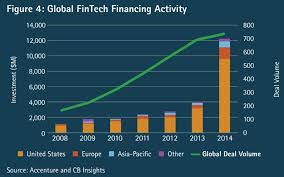Startup Companies – Obtaining Venture Loan/Term Loan Credit
01.04.2018

Having served as the CFO of a number of Startups for over a decade, I have taken part in dozens of credit transactions, in an aggregate amount of hundreds of millions of dollars, with banks and other financial institutions (as further described below). We consistently obtained lines of credit of millions of dollars for growing startups (with and without income), with excellent terms and against guarantees (in the form of liens on company assets) – but never against any personal guarantees of shareholders or company management.
The instability of the financial markets over the last few months and the uncertainty such instability has created for companies (e.g. doubts regarding the ability to receive, and the timing and value of, the next financing) has caused a boom in the amount of credit sought and utilized by companies. In my view, as this trend continues, additional companies will begin to consider using available credit as an alternative to raising capital, whether for security and backup, working capital, for its ongoing activities or for growth.
Capital or Credit?
Growing companies would be wise to consider using credit from the outset as part of their long term financing strategy, rather than as a last resort at the last moment, when their funds run out and they have no other financing options left. When companies make efforts to obtain credit in an orderly (and, if I may – in a premeditated fashion), credit can become an extremely useful tool for financing a company, which can be utilized simultaneously and in addition to equity financings. From my experience, credit can finance a company past profitability, finance a few months of activity until an additional capital financing, bridge gaps in working capital, fund the acquisition of another company, or finance quick growth of companies (for example, in a SaaS company with a short Total ROI).
Credit behaves differently than capital in two main respects. From the company's perspective, credit is temporary funding and this has an important implication on a company's cash flow – a repayment schedule of the debt and interest. From the perspective of the shareholders of the company – under certain conditions funding through a loan will lead to lower dilution. For example – a company with a pre-money valuation of $54M can raise capital in the amount of $6M in exchange for 10% of the company, or alternatively, raise capital in the amount of $3M and also debt of $3M in exchange for only 5.5% of the company (5% for the capital and another 0.5% for the credit, calculated for the purposes of this example at 10% of the capital). The debt, of course, must be repaid, and there is also an assumption that the next financing will be at a higher valuation, so it's hard to truly compare the two alternatives, however the potential is simple and practicable.
The Typical Structure of a Credit Transaction
In its simplest form, a Term Loan or Venture Loan (which are both the same thing, so don't let the terms confuse you) is a fixed line of credit which a company may draw from over the course of a particular period (the "Grace Period" – typically until a year from the date of signing), and is returned in fixed payments (typically – every two months) of interest and principle over a period of two to three years (the "Repayment Period").
The cash flow of a typical loan looks as follows:

In its more complicated form, the Repayment Period may be composed of a period of interest payments alone, followed by repayment in equal monthly payments. It's possible that the credit limit may be varying (typically it increases) depending on the occurrence of some subjective event (such as meeting a sales target determined in advance, or raising capital by the company). Sometimes the period of the credit line or repayment may vary according to certain criteria agreed upon in advance. These loan structures are no simple matter.
Threshold Conditions:
In order for any institution to agree to grant a loan to a Startup, a number of conditions must be satisfied:
A. Composition of shareholders - most institutions will not grant credit to a Startup company unless it's funded by venture capital funds.
B. The lender needs to believe in the company, the product, the market and the management. Companies need to approach lenders in a professional manner and assume the lender will conduct an orderly due diligence process (although it may be short and to the point).
C. The financial forecast needs to make sense - the amount of money the company requests must match the company's current stage of development and its repayment ability (from ongoing cash flow or future financings).
Effective Annual Interest Rate
The effective interest rate a company will pay for the credit will vary from 3.5% to 15%. In the past, I used to be surprised by this huge gap, however, I learned to understand and accept it. Companies, lenders and shareholders are all different from one transaction to another and so the transactions themselves can be materially different. The most important lesson that you should remember is that even after you close this page – there are no free lunches. You need to look at the entirety of the circumstances. The manner in which I examine and compare the various alternatives I have at my disposal as CFO before making my recommendation to the CEO and Board of Directors of the company is exhaustive – looking at all of the parameters of the transaction, including net cash flow, the equity component, financial covenants, and the reputation of the lender (and in particular how the lender acts during difficult situations, such as when the agreement is breached or where there are other funding issues). With respect to the interest, I always try to compare the net cash flow the company would receive from the credit (in accordance with the credit amount, the withdrawal and repayment terms, costs of establishing the credit, interest, and other expenses) over the course of the entire loan period – and not just the percentage of interest or the amount of money on the date of withdrawal. After all, the reason a company obtains credit is not limited solely to short term considerations and is not a matter of percentages – but rather is to obtain money that can be used over an extended period of time. Once, when I graphed out the net cash flow of two different loans, one in the amount of $10M and the second in the amount of $13M, I realized, to my surprise, that the first loan provided more value to the company than the second over the period of the next twelve months (the critical period which we wanted to fund) – despite the difference in the scope of credit offered and solely as a result of the repayment terms.
Lower interest rates are typically offered by banks for two reasons. The first is that their cost of money is lower. The second is a business model of the bank which allows it to finance a portion of the risk through other services it provides (this is why such banks demand that the majority of the funds and the company's account are managed with the lender bank). Some people view the fact that the majority of the balance of the funds of the company are held in the lender bank as a type of risk, due to the technical ability of the bank to offset funds (subject of course to the agreement). However, for the sake of comparison and good order, in the United States its common for borrowers to sign a Control Agreement to the benefit of the lender (even if such lender is not a bank), which in practice allows the lender to directly access the borrower's bank account and draw the balance of the debt owed in the event of a breach of the agreement – which is pretty similar, right?
The Equity Component
The equity component of a credit transaction can vary greatly (from 0.1% to 2% of a company's share capital), depending on many different factors - primarily it is dependent on the lender's assessment of the risk involved, including the scope of credit, the financial condition of the company, the composition of shareholders, repayment terms, the value of the guarantees, etc. Throughout my years as a CFO, we failed to repay some of the loans we took on (because unfortunately, the companies were not successful). As a result, I understand well the risk inherent to these types of loans, but despite this, I would like to point out: (A) in a successful company, equity is worth a lot. A LOT. When you compare two offers (or even more) make sure you are comparing apples to apples. Ask yourself: What is the contribution of the credit to the company and how much does the money cost you? You need to calculate how much is being requested on a fully diluted basis (and not as a percentage of the credit), what is the exercise price of your options (prior round? next round? the value of an ordinary share/409a), whether the amount is fixed or subject to change in the future; (B) Ask yourself how much of the equity component is given upon signing/during the Grace Period in contrast to the equity component given solely upon withdrawal of the money (if any)? A good practice is to visualize the first component as the purchase of a insurance policy.
The Identity of the Lender
Parties that I have dealt with in the past include domestic actors (Viola Credit, Kreos Capital, SVB, Bank Leumi, and Bank Mizrahi) and foreign actors (Comerica Bank, City National Bank, TriplePoint, WTI, Hercules, Horizon Capital, Bridge Bank and others that have since come and gone). The capital market is dynamic. You need to remember that when it's difficult – it's difficult for EVERYONE, some lenders will experience organizational changes (small banks are acquired for example) and other lenders will need to raise funds themselves from time to time. A company who contracts with a financial institution and relies on the financial institution to fund its activities must carefully check that lender's reputation, its ability to continue to be in business for years and finance the company's activities for a lengthy period. After all, the average term of a loan is a number of years and developing companies are likely to need more credit in the future.
How Long does a Credit Transaction Take?
From the moment the company begins searching for sources of credit, the process can take around three months to complete. The first month – preparation (presentations, financial forecasts) and meetings. The second month – receiving offers, negotiations, decision making, board approval and signing a term sheet. The third month – due diligence, work on the contract and signing.
Conclusion: A Number of Key Points to Remember
(1) Since a loan agreement is a lengthy legal document, it honestly takes a long time to read it in its entirety. However, even more important than actually reading the entire agreement, it's essential to work with an experienced lawyer who is familiar with these types of transactions.
(2) The costs of establishing the credit can reach an amount of many tens of thousands of dollars (including legal expenses and other related costs). You need to take these costs into account in calculating the expected cash flow from the loan.
(3) The Grace Period needs to correspond to the company's cash flow needs. The timing of the withdrawal of the credit is significant, both from a cash flow perspective and from the perspective of the cost of the credit.
(4) For certain types of companies the interest may be subject to tax withholding at source, at the company's expense. This needs to be taken into account when considering the effective interest rate and when comparing alternatives. In addition - make sure to pay the tax on time.
(5) The credit must provide the company with the funds it will need under a number of different and realistic scenarios. For example, if a company is planning to fund its activities for a particular period through credit and enters into a significant loan agreement subject to satisfaction of 90% of the sales targets of the company, it assumes a risk that failure to reach those targets will not only worsen its current condition, but will also prevent it from accessing the credit. However, here is an even better example that demonstrates this issue. If a company has a credit agreement of $10M, half of which is subject to the consent of the lender, this agreement needs to be treated as credit of $5M only. Consider yourself warned.
(6) Time is a risk. Things can go wrong and change before signing the agreement. If the company decides to enter in to a credit agreement, invest resources in closing agreement within a short period of time and do not get caught up on minor issues.
(7) Sometimes, a company that is funded with credit may grow and develop, raise additional funds, become profitable or be sold - and no longer needs the credit and as a result may elect to repay the loan early. It is important to remember that under the terms of many transactions, such early repayment may entail significant additional costs.
(8) Some financial institutions do not know how to provide loans to companies funded by the Israel Innovation Authority (formerly known as the Office of the Chief Scientist).
(9) Although the lender typically does not participate in the management of the company (and accordingly does not have a board seat or observer), it is essential to maintain an open, transparent and ongoing relationship with the lender. A lender that feels as though they are your partner will act accordingly when the company experiences difficulties (and usually, there will be tough times), will be willing to deviate from protocol and the loan agreement in order to help get through the crisis together with the company.
(10) You need to choose a lender diligently. You need to consider the people you will be working with, the legacy and reputation of the financial institution and the relationship that you will build over the course of years. Consult with investors and other management. It is very likely that over the course of the period of credit (several years) the company will experience significant changes and therefore the lender needs to be someone who can go through these changes together with the company and help it through those processes.
Itzik Lev is a Partner and CFO at Nextage, a leading financial services firm working with the hi-tech community in Israel and America.
Nextage provides various services such as CFO and controlling services and escorting more than 300 startup companies.











